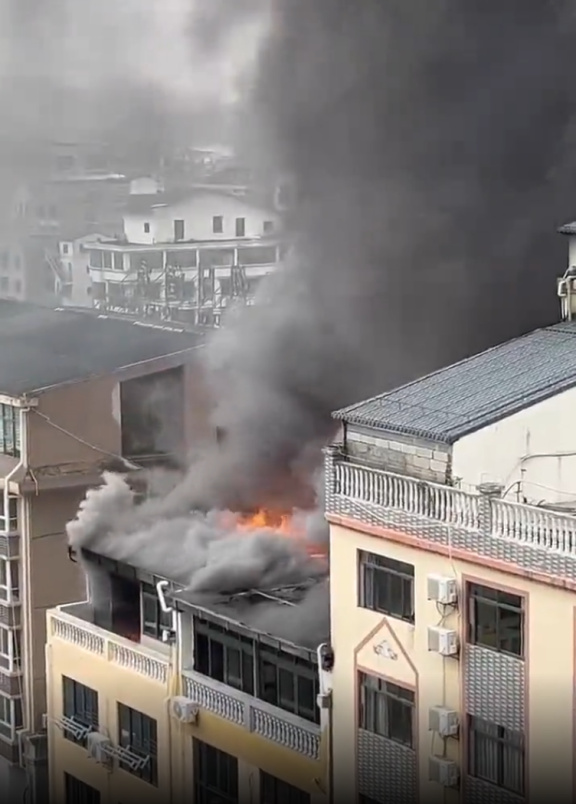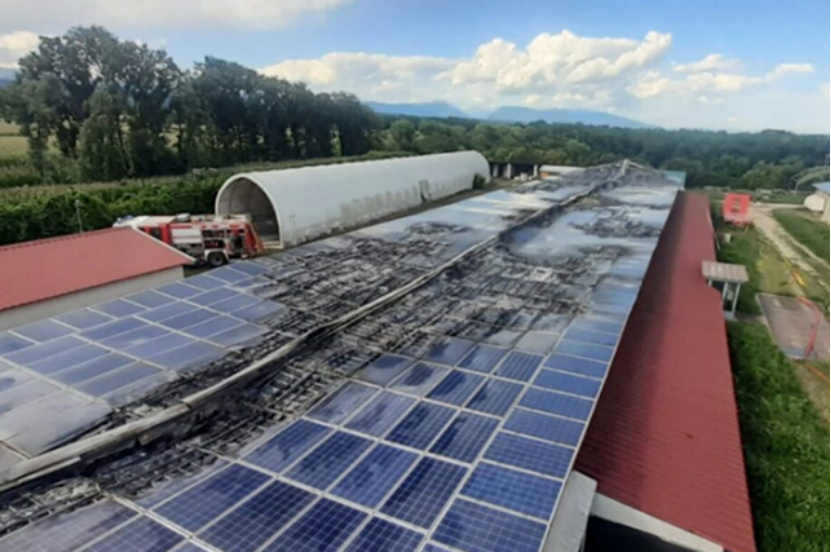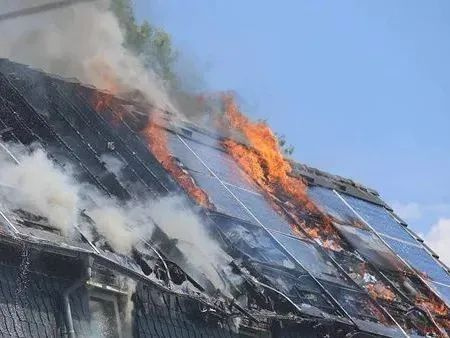In recent years, with the rapid expansion of photovoltaic products, distributed photovoltaic power stations combined with buildings have been widely applied. Besides professional photovoltaic power stations, some photovoltaic operation companies are rapidly expanding their business in rural areas. Among them, many self-built houses in rural areas have already installed a large number of photovoltaic equipment through roof leasing and power repurchase!
During the construction and operation of photovoltaic power stations, if they are not operated and maintained properly, fire accidents may occur! At present, the rapid coverage of photovoltaic power in rural areas raises concerns about fire risks.

On November 7, 2023, a fire broke out in a household photovoltaic system on the rooftop of a street-facing residential building in Boao Town, Qionghai City, Hainan Province. The fire affected an area of nearly 200 square meters, and almost all the photovoltaic modules were destroyed. Fortunately, no casualties were reported. According to informed sources, the accident was caused by the substandard photovoltaic modules purchased by the landlord online.
At 4 p.m. on June 30, 2025, smoke and fire broke out from a 3.5MW photovoltaic array on the roof of a Wahaha factory building. Although no casualties were reported, the thick smoke caused production to be interrupted. The project has an investment of over 20 million yuan and was connected to the grid in 2017.
In May 2025, a fire broke out in the photovoltaic project on the top cover of the sound barrier of the city’s ring expressway. Within three minutes, it exploded seven times, burning through the steel structure and causing objects to fall from a height, resulting in the paralysis of two-way traffic for more than two hours.

On August 9, 2023, a fire broke out at an egg-laying chicken farm in Treviso Province, Italy, resulting in the death of over 20,000 egg-laying chickens in the farm. The fire department said that the fire might have been caused by a photovoltaic system above the poultry farm shed. The blaze burned over 1,500 square meters of heat insulation covers, generating a large amount of smoke and suffocating tens of thousands of laying hens.
On July 6, 2025, a solar panel on the roof of the Fanti factory in Wilton, Ohio, caught fire, and thick smoke spread. The fire department took 45 minutes to put out the fire, but they had to wait for the factory to cut off the power supply, which delayed the rescue. Some of the roof and photovoltaic installations were burned down, but fortunately, the damage did not spread to the interior of the factory building
Fire is merciless; prevention comes first.
Why do photovoltaic systems catch fire?
How can we do a good job in fire prevention during daily operation?
According to statistics, over 80% of fire accidents in photovoltaic power stations are caused by faults on the DC side, especially fires triggered by hot spots on components, loose connections in electrical circuits, and DC arcing issues. In addition, the failure of fire prevention measures, component quality issues, electrical accidents, weather and natural disasters are also important causes of fire accidents in photovoltaic power stations.

1. Component “Hot spot effect
When photovoltaic panels are in operation after being powered on, if their surfaces are covered and blocked by bird droppings, mud, leaves, or severe dust accumulation, the temperature in the blocked local areas will be higher than that in other areas, thus forming a “hot spot effect”, which may cause safety hazards and, in severe cases, lead to fire accidents.
2. Loose connections, aging, short circuits, etc. in electrical circuits
Due to issues such as loose connections, loose connections, and poor sealing at the cable joints of electrical equipment like components, inverters, and junction boxes, the resistance at the contact points increases, abnormal heating occurs, and the insulation strength decreases during equipment operation, posing a risk of spontaneous combustion.
3. Dc arc pulling
In the entire photovoltaic system, the DC side voltage is usually as high as 600 to 1000 volts. Dc arcing is highly likely to occur due to reasons such as loose connection points, poor contact, broken wiring, damp wires, and insulation rupture of photovoltaic module joints. Direct current arcing can cause a sharp increase in the temperature of the contact part. A continuous arc can generate a high temperature of 3000 to 7000 degrees Celsius, accompanied by carbonization of the surrounding components. In mild cases, it can burn out the joints and fuses; in severe cases, it can burn out the components and equipment, causing a fire.
4. Weather and natural disasters
Photovoltaic power stations are built outdoors and are vulnerable to the influence of weather and natural disasters. For instance, extreme weather conditions such as strong winds, heavy rain and hail may cause damage to the equipment of power stations, thereby triggering accidents.
Nowadays, photovoltaic power generation is developing rapidly and becoming increasingly popular. In daily applications, more precautions should be taken to prevent the occurrence of fire accidents.
Rational layout: During the site selection and construction of distributed photovoltaic power stations, it is necessary to rationally plan and arrange equipment and buildings based on local climate, terrain and other conditions to reduce the risk of fire caused by natural factors such as rain and snow.
Regular inspection and maintenance: Regularly inspect and maintain the equipment of photovoltaic power stations, promptly identify and repair potential faults and problems, ensure the normal operation of the equipment, and prevent the occurrence of fire accidents.
Improve the fire protection system: Photovoltaic power stations should establish a complete fire protection system, equipped with fire alarm systems, fire extinguishers, fire hydrants, etc. So that in case of fire or other accidents, timely extinguishing and response can be carried out.
Strengthen fire safety training: Train the operators of photovoltaic power stations to familiarize them with the operation principles, equipment operation procedures and safety operation processes of photovoltaic power stations, enhance their awareness of fire safety and emergency response capabilities, and provide effective fire fighting and escape guarantees in case of fire.
Real-time security monitoring: Install cameras, monitoring equipment, etc., to enhance real-time inspection and monitoring of distributed photovoltaic power stations and their surrounding areas, promptly identify abnormal situations and issue early warnings.
Establish emergency response plans: Develop emergency response plans for photovoltaic power stations, clearly define the response measures and responsibility divisions when various accidents occur, and enhance the ability and efficiency to deal with unexpected situations.
Compared with centralized photovoltaic power stations, household photovoltaic systems should be more vigilant in terms of prevention.
While the relevant enterprises are rapidly expanding their business, they should strengthen daily inspection and maintenance, and provide residents with fire blankets, dry powder fire extinguishers and other fire-fighting equipment. Once residents discover a fire, they should evacuate in time and call the police for help. Remember! Do not use water directly to put out the fire!
Post time: Jul-09-2025
